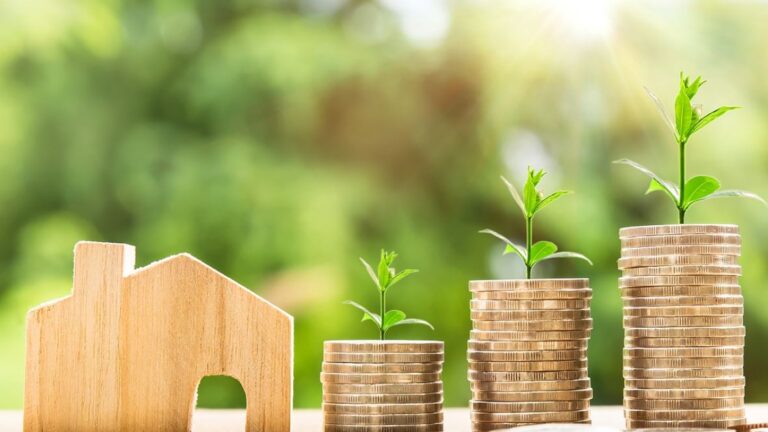The world stands where sustainable choices are no longer peripheral but central to our collective futures; amidst rising concerns about climate change, resource scarcity, and economic stability, construction materials derived from recycled plastics present not just an ecological necessity but a compelling financial proposition.
With every shift towards green building solutions, we move closer to a future where growth is harmonised with planetary stewardship. In this discourse, we explore how recycled plastic construction materials bring substantial economic benefits, enhancing both the financial and environmental calculus for builders, investors, and developers alike.
Overview of Recycled Plastic in Construction
Once confined to a subset of recycling efforts, plastics have now found an unlikely ally in construction. Plastic—often scorned for its indestructibility—is being lauded for precisely that property when repurposed into robust, long-lasting materials for construction. Products like recycled plastic boards, plastic doors, and even structural components have entered the mainstream, becoming viable, even superior, alternatives to traditional resources such as wood, metal, and shuttering plywood. Unlike conventional materials susceptible to wear, moisture, pests, and decay, recycled plastic offers unprecedented durability, flexibility, and environmental prudence.
The metamorphosis of plastic waste into viable construction materials not only diverts waste from landfills and oceans but reintroduces it into a circular economy that sustains rather than depletes it. Such materials fulfil a dual purpose—mitigating the environmental degradation associated with plastic pollution while paving the way for a more resource-efficient construction industry.
Cost Benefits of Recycled Plastic in Construction
Discerning cost factors reveal recycled plastic construction materials as a veritable boon. At the outset, the initial acquisition costs of recycled plastic sheets or boards may hover around the same range as traditional materials. However, therein lies an intriguing irony: while conventional materials like plywood require repeated replacements over a project’s lifespan, recycled plastic offers extended durability, thus drastically reducing replacement costs. For instance, builders opting for plastic shuttering may encounter a steep reduction in material expenditure over multiple projects due to the materials’ impressive resilience.
Moreover, many recycled plastic products are inherently manufactured to be robust, leading to significant savings in transportation costs and easing logistical demands on-site. Projects benefit from reduced overheads and the intrinsic advantages of a versatile material that enhances efficiency.
Longevity & Durability of Recycled Plastic
The financial benefits of longevity cannot be overstated. Whereas conventional materials degrade and succumb to environmental stressors over time, recycled plastic stands unyielding. Resistant to water, insects, and atmospheric degradation, recycled plastic construction materials are virtually impervious to the ravages that often afflict materials like wood and metal. In an era where durability is synonymous with value, recycled plastic boards, shuttering sheets, and other structural elements defy conventional wear, offering value that extends well beyond the initial investment.
Moreover, the lifespan of these materials makes them a wise choice for infrastructure in regions with extreme climatic conditions. In sweltering heat or torrential downpours, recycled plastic thrives where others falter. This durability ensures that buildings, structures, and installations require minimal refurbishment or replacement, contributing to significant long-term savings and a dependable return on investment.
Maintenance Savings
Maintenance—a perennial challenge for construction projects—is another domain where recycled plastic materials emerge as unassailable champions. Wood, for instance, necessitates recurrent treatment to prevent termite infestations, decay, and moisture absorption, which incurs costs and time. Recycled plastic, by contrast, requires no such upkeep. Plastic shuttering, widely used in concrete moulding, maintains its structural integrity even after multiple cycles, unlike plywood, which deteriorates rapidly with each use.
The negligible maintenance demands of recycled plastic construction materials mean that once installed, the costs associated with their upkeep are virtually eliminated. This advantage is particularly advantageous in high-stress applications where materials are subject to substantial wear, such as in outdoor installations or areas with high humidity. As a result, recycled plastic products emerge as a preferred choice for builders and developers seeking to optimise operational budgets and reduce long-term maintenance expenditures.
Conclusion: Towards an Economically and Ecologically Sustainable Future
In summation, the economic virtues of recycled plastic construction materials stretch beyond mere cost-effectiveness; they represent a paradigm shift in how we approach building and development in an era of sustainability. By minimising replacement, reducing maintenance, and offering long-term durability, these materials address many economic challenges that conventional materials simply cannot match. Moreover, adopting plastic building materials sends a message of commitment to sustainable practices and environmental stewardship.
As we forge ahead, it is clear that recycled plastic construction materials are not just an alternative but a superior choice in the quest for economically sound and ecologically responsible building practices. They fulfil the dual mandates of supporting fiscal prudence and preserving the planet. In so doing, these innovations chart a course towards a future in which sustainable building becomes the cornerstone of modern development—an era where both profit and the planet thrive in harmony.

